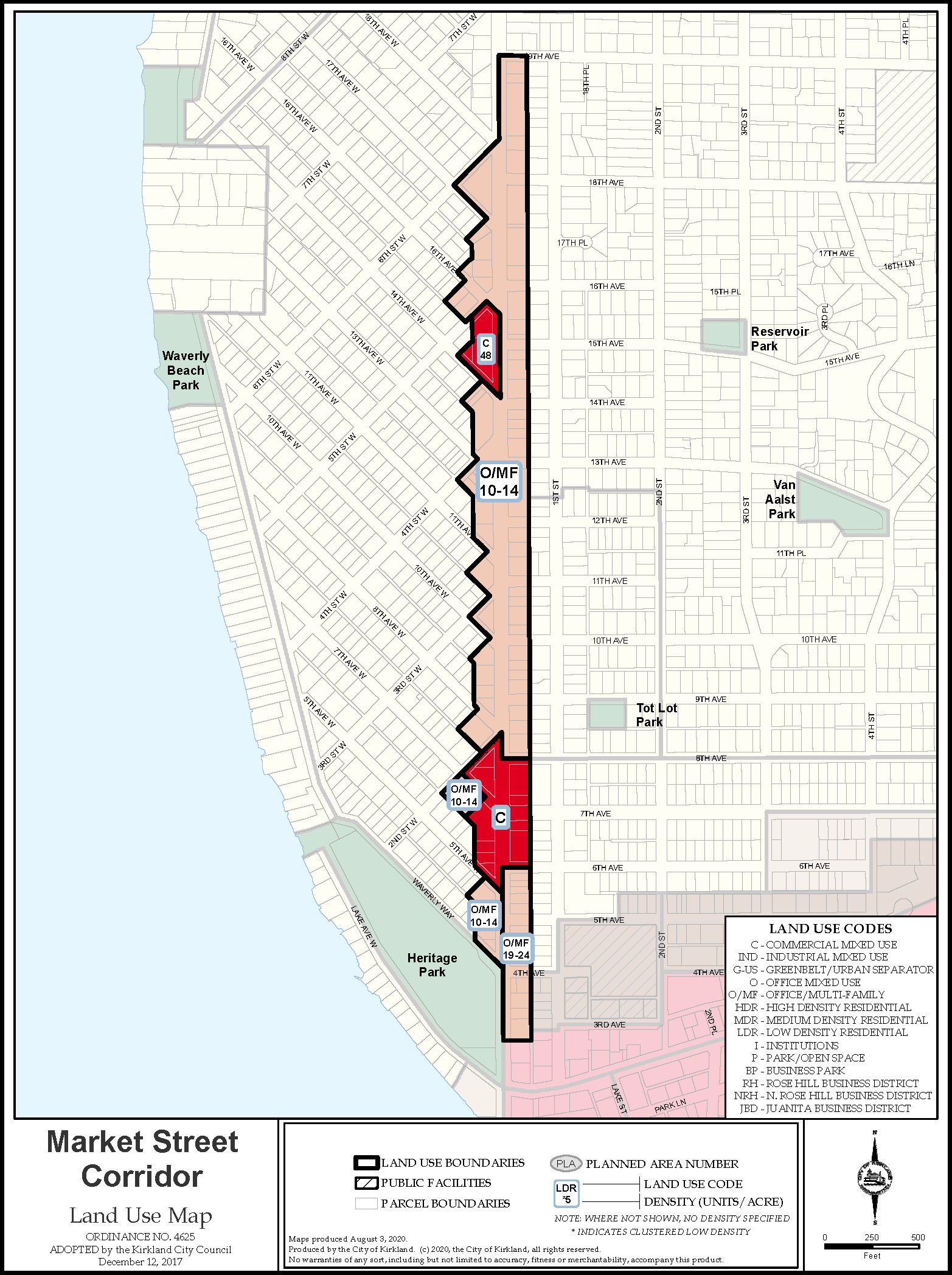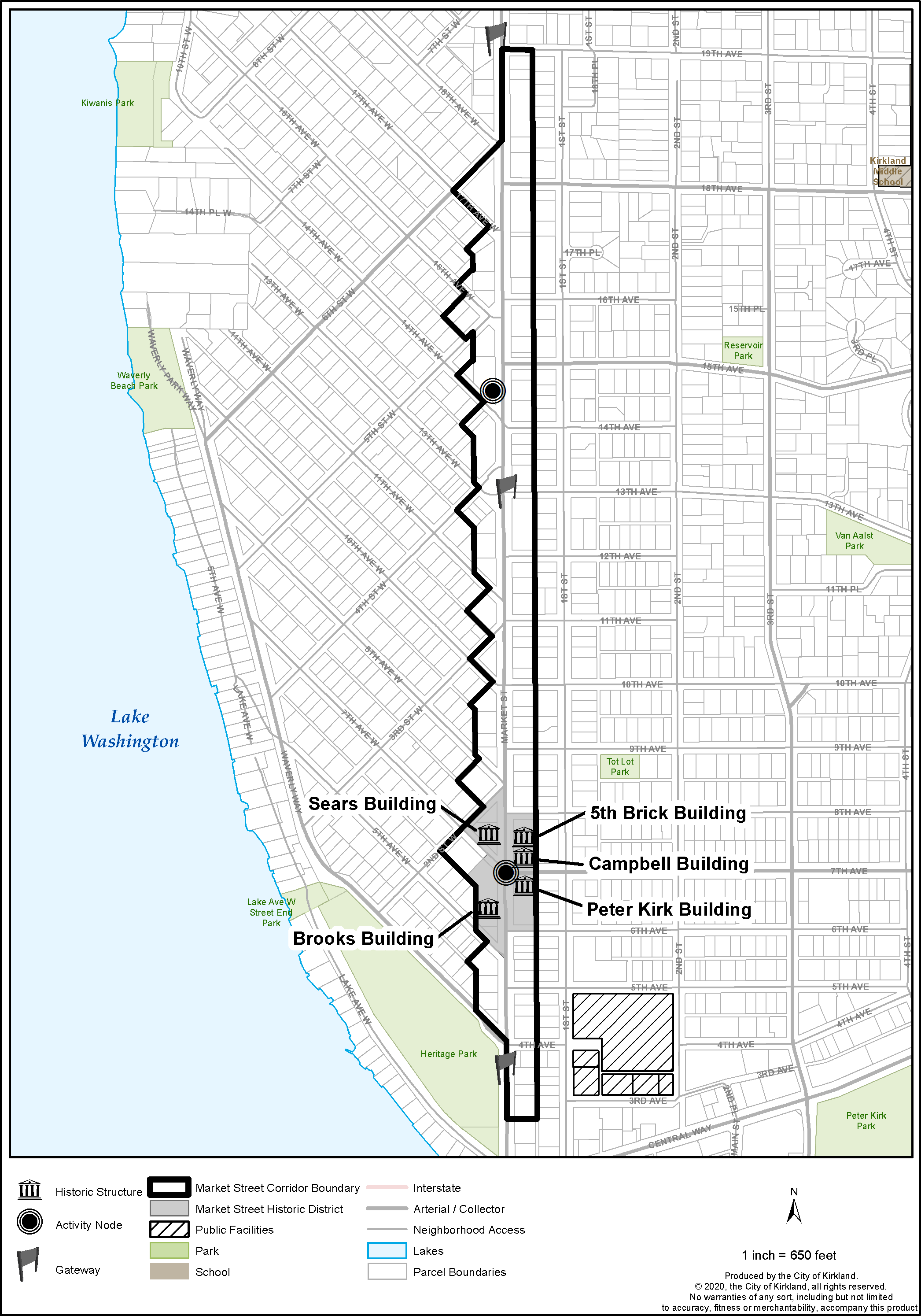4. LAND USE
Policy MS-4:
Encourage a mix of uses within the Market Street Corridor that includes multifamily residential and office uses, as well as neighborhood-oriented shops and services to promote neighborhood walkability and provide services to the greater community.
Most of the corridor is developed with a mixture of small-scale multifamily residences at a density of 12 units/acre and office development. It is also appropriate to have neighborhood businesses interspersed throughout. This scale and pattern of development for the corridor fits well with the adjoining neighborhoods.
There are two nodes along Market Street that function as neighborhood shopping and services areas: one on the south and one on the north shown in Land Use Map Figure MS-2. The area south of 6th Avenue and 5th Avenue West functions as a connection between the City’s historic district and the Central Business District (CBD).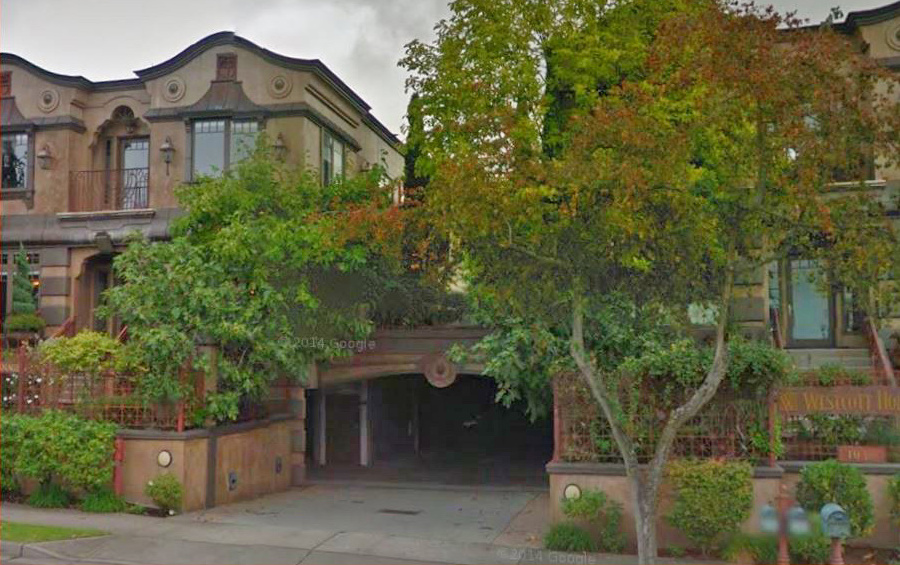
Office Development on Market Street
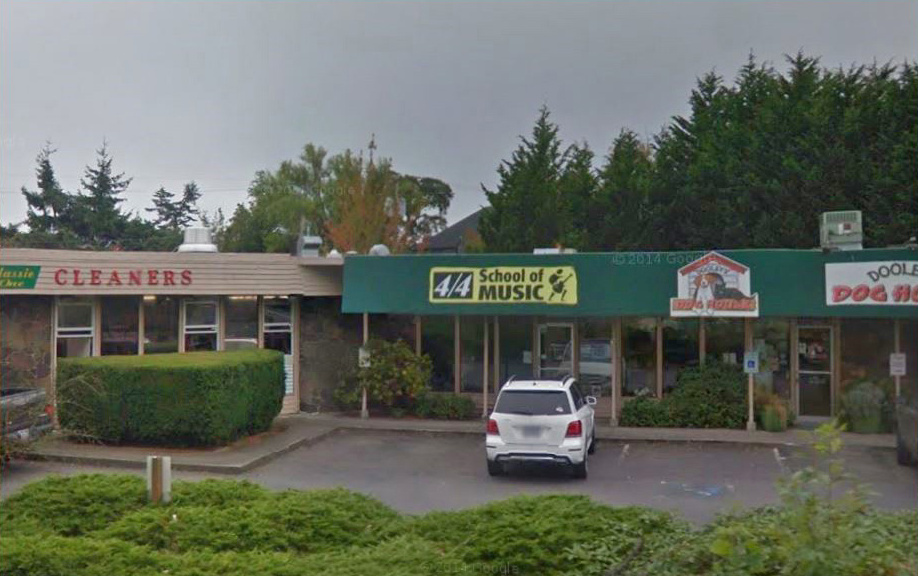
Neighborhood Shopping Area
Small-scale multifamily uses and office development are also allowed here, but some of the area is at a higher density than the 12 units/acre allowed north of the historic district. On the east side of Market Street, multifamily density can go up to 24 units/acre. This helps the area to make a better transition into the CBD.
The neighborhood-oriented businesses located on the west side of Market Street, north of 14th Avenue West provide convenient shopping and services for residents in the area. If redevelopment of this site occurs, the buildings and site should be designed so that their appearance is complementary to the character of the adjoining neighborhood. Landscaping and other design elements can be used to soften and buffer the commercial uses onsite from the adjoining residential uses.
Policy MS-5:
Retain the historic district roughly between 8th Avenue/2nd Street West and 6th Avenue/5th Avenue West as a special planning area of the corridor.
This area should remain a business commercial zone (shown on the Land Use Map, Figure MS-2) allowing residential, office and retail uses, and should include special regulations that reinforce the historic nature of the intersection at 7th Avenue and Market Street.
Policy MS-6:
Restrict the development of new commercial and large scale multifamily structures to locations within the limited boundaries and land use districts designated for the Market Street Corridor.
Larger scale multifamily and commercial development should remain in designated areas within the Market Street Corridor and not extend into the residential core of the Market and Norkirk Neighborhoods or beyond 19th Avenue to the north. The slope and alley parallel to the east side of Market Street provide a break between the corridor and the residential core of the Norkirk Neighborhood. The break is not as well defined on the west side of the street between the corridor and the Market Neighborhood residential core; however, it is generally located adjacent to properties that directly abut Market Street and is a useful neighborhood feature. (See Land Use Map, Figure MS-2). 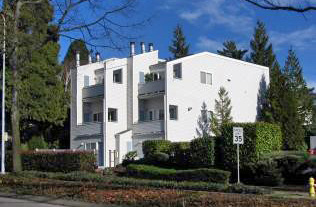
Multifamily Development on Market Street
Policy MS-7:
Enhance neighborhood compatibility through site design standards for multifamily and commercial buildings in the Market Street Corridor.
Building and site design standards should address issues such as building placement on the site, site access and on-site circulation by vehicles and pedestrians, building scale, site lighting, signs, landscaping (including for parking lots), preservation of existing vegetation, and buffers between multifamily and commercial developments and lower-intensity housing.
Policy MS-8:
Appropriate building height for the corridor is up to two to three stories – two stories in general, and three stories in the neighborhood shopping and service nodes described in Policy MS-4. Additional height may be allowed as established in the Zoning Code to encourage a variety of roof forms, and as part of the design review process.
A range of building heights along the corridor is appropriate as a transition to adjacent lower intensity residential uses, to reflect topographical change in the neighborhood, and to encourage below-grade parking areas.
Policy MS-9:
Conduct a study of the parking requirements in the Market Street Corridor to encourage more small neighborhood commercial uses such as retail, office, or restaurant uses while minimizing impacts to adjacent residential neighborhoods.
There is neighborhood support for encouraging more small neighborhood commercial retail, office and restaurant uses along the corridor. Existing zoning regulations allow flexibility in the amount of parking stalls if a parking demand study is submitted that analyzes the unique parking needs of a business and a reduction in the number of parking stalls is justified. A general study should be completed for the corridor to identify code amendments and incentives that could help foster viable neighborhood-serving commercial uses along the corridor. Areas for further study could include parking requirements, building height, lot area coverage, building setbacks, and design requirements. Any code amendments should be designed to enhance the aesthetics and walkability of the neighborhood. 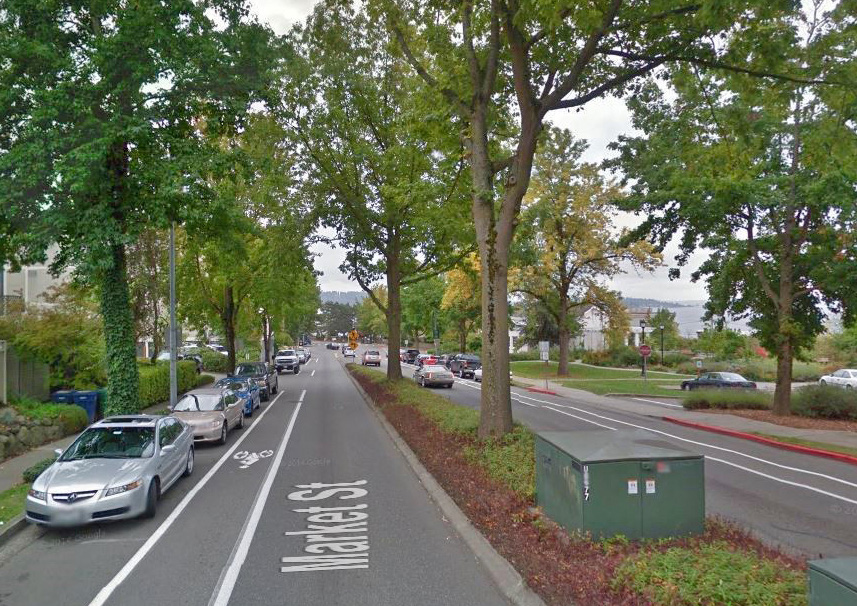
Parking along Market Street Corridor
Figure MS-2: Market Street Corridor Land Use
Policy MS-10:
Maintain and enhance the character of the historic intersection at 7th Avenue and Market Street.
Existing historic resources should be considered when adjacent structures are being rebuilt or remodeled. The scale and design features of the historic buildings at the intersection of Market Street and 7th Avenue should be considered when development in that area occurs.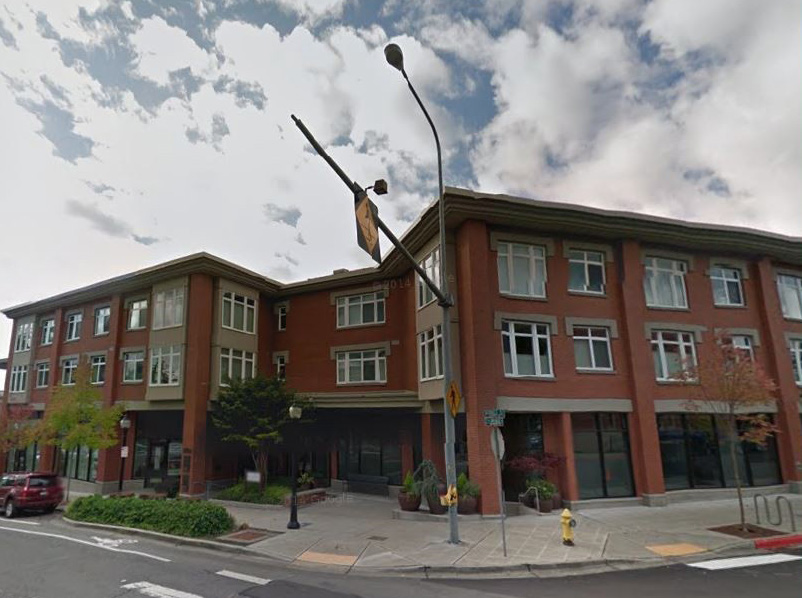
Intersection of 7th Avenue and Market Street
Policy MS-11:
Utilize design review to administer building and site design standards for commercial and multifamily development along the Market Street Corridor.
Design review is important for the historic area surrounding the Market Street and 7th Avenue intersection (see Figure MS-3) and appropriate for all multifamily and commercial development along the corridor. The design review process using the Design Guidelines for the Market Street Corridor or Design Standards in the Zoning Code should be used to review site and building design issues such as building placement, landscaping, and building details, as well as public improvements including sidewalk width and street furniture.
Policy MS-12:
Provide streetscape, gateway and public art improvements that contribute to a sense of inclusive identity, enhance visual quality, and unify the Market Street Corridor.
Decorative street lights, a consistent street tree plan, and pedestrian seating can all be used to reinforce the collective character and reflect the feeling of the corridor. The landscape strip on the east side of Market Street adds interest and provides a more secure pedestrian environment. Additional street trees should be considered on the west side of Market Street. The City should also consider funding street lights designed to reflect the area’s history within the historic district and possibly along other areas of the corridor.
Policy MS-13:
Construct and improve gateway features at the locations identified in the Market and Norkirk Neighborhood Plans.
Desired gateway feature locations are indicated on Figure MS-3. Improvements such as landscaping, signs, public art, and other features that identify the neighborhood can be included if they are appropriate for a location. Public investment will be necessary in most instances, but the City can also pursue opportunities to work with private property owners to install gateway features as part of future development.
Policy MS-14:
Administer development standards and design guidelines that address transitions between primarily residential areas and the commercial and multifamily residential uses along Market Street.
The building mass and/or height of higher density structures should complement rather than dominate or overwhelm adjoining lower-intensity uses. Landscape buffers, vertical or horizontal building modulation such as upper story step backs or architectural treatments should be used to soften and separate uses by creating a transition zone. Some of the existing buildings may also need enhanced landscaping in order to prevent commercial structures from having a negative impact on adjoining residential uses.
Policy MS-15:
Orient buildings toward Market Street.
Commercial and multifamily development that is oriented toward Market Street with reduced setbacks will reduce impact on adjacent lower-intensity residential neighborhoods.
Policy MS-16:
Retain and improve the existing tree canopy in the center median on Market Street.
The mature trees and landscaping in the center median and along both sides of Market Street are important natural features to the neighborhoods to retain and maintain. In addition to the environmental and functional benefits they provide to reduce stormwater runoff, maintain tree canopy, buffer between travel lanes, and shade, the trees provide an aesthetic parkway boulevard that is unique to the neighborhood and provides a pleasant walking experience for pedestrians. 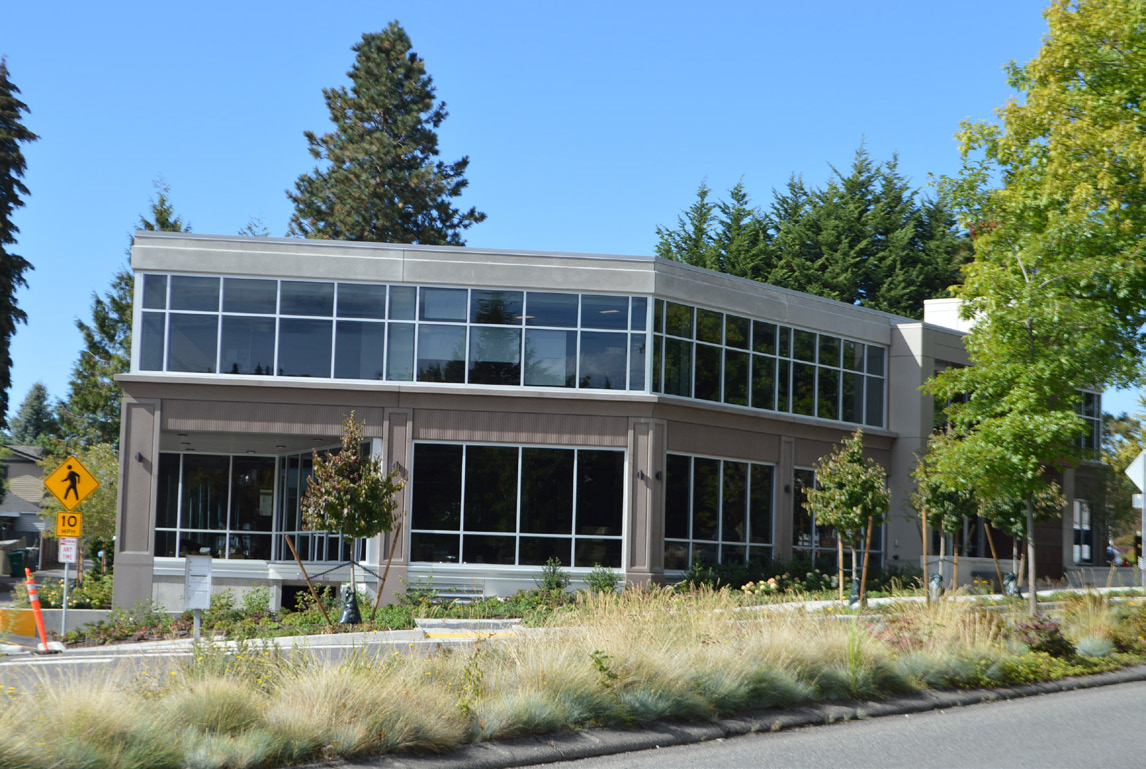
Dibble Office Building
Figure MS-3: Market Street Corridor Urban Design Features



